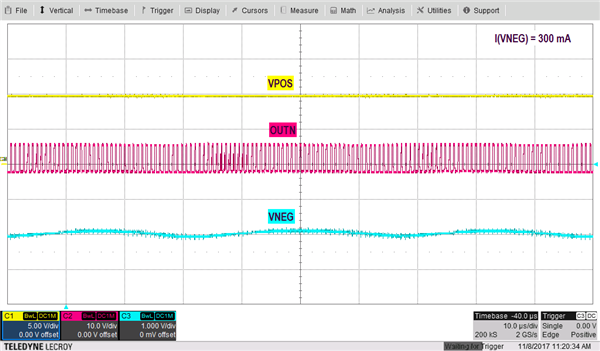Hi
I have an issue from my customer. Could you support for this issue?
Vneg voltage has oscillation when negative output voltage set -2V and load is over 100mA.
Customer conditions
Board : Customer designed board
Vin=5V
Vout(neg) = -2V setting
L : 4.7uH
Cout : 10uF x2
I tried to check with our EVM.
I confirm same behavior with TPS65131EVM.
I seem, this behavior improved when I modified following external components. (not perfect improve)
-
Inductance decrease to 1.0uH
-
Output capacitance increase to 200uF.
Could you check about it? And, Could you give me your advice for improvement and cause of this issue?
Thanks
Yusuke Mukuno




